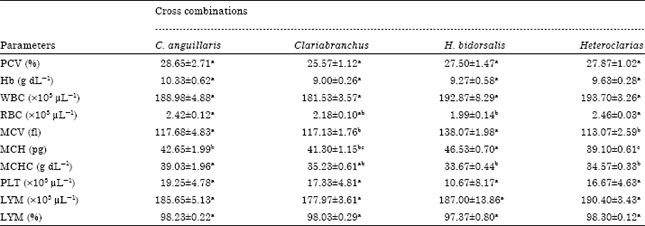Research Article
Some Haemtological Parameters of Inter-generic Hybrid of African catfish (Clarias anguillaris x Heterobranchus bidorsalis) Juveniles and Their Pure Lines in North Eastern Nigeria
Department of Fisheries, University of Maiduguri, Maiduguri, Nigeria
A.B. Haruna
Department of Fisheries, Federal University of Technology, Yola, Nigeria
K.A. Abubakar
Department of Biological Science, Federal University of Technology, Yola, Nigeria










